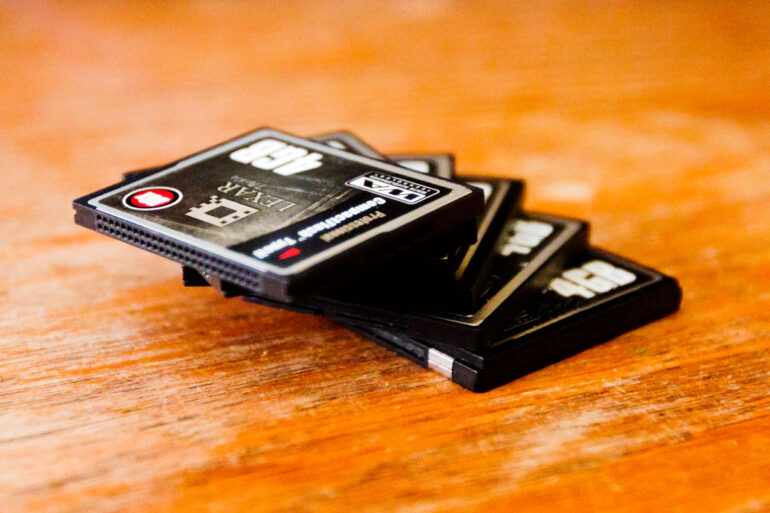We may earn a commission when you purchase through affiliate links. Learn more.
Ever wondered how something about the size of a postage stamp can store thousands of photos and be reused over and over?
Flash memory cards are a type of solid state storage media, meaning that data is written to these memory cards without the involvement of any moving parts. Without any moving parts like you would find on a hard disk drive which writes data to rapidly rotating platters with magnetic heads, flash memory cards like CF and SD cards store each bit of information (0’s and 1’s) on NAND chips, recording the data on transistors known as floating gates.
NAND flash memory allows your data to be retained without power, meaning that even if you leave your SD memory card sitting in a drawer for a few years, you should be able to plug it in to a card reader and download all your photos! Because there are no moving parts, flash memory devices like SD and CF memory cards have survived all kinds of abuse like being washed in the the laundry, left in the snow, and even drifting in the ocean for years. Obviously, you shouldn’t store your memory cards in your garden or send them on a voyage across the sea, but if you do drop one a puddle, there’s a very good chance that it will survive, along with the data stored on it. Unlike spinning hard drives or those ancient things called floppy disks, which record data magnetically, your photos are safe even in magnetic fields.
How Long Will A Memory Card Last?
This is a tough question to answer, but theoretically all modern flash memory cards produced by the top brands like Lexar and SanDisk should be able to keep working and enduring heavy use for many years. Flash memory does not have an infinite life span though, and has limited write cycles (how many times data can be written to the memory card).
To keep flash memory cards from wearing out quickly, a technique known as wear leveling is implemented in many memory cards. If a certain flash memory block was written to and erased multiple times without writing to other blocks, it would fail much more quickly. To prevent this, wear leveling distributes data writing evenly across all of the flash memory blocks.
Unfortunately, wear leveling is a feature that may not be included or properly implemented on the ultra-cheap no-name memory cards, so keep in mind that when it comes to reliability and longevity of memory cards, you often get what you pay for.
Even with wear leveling, memory blocks will eventually experience errors – when this happens, flash memory cards are designed to identify this and prevent any data from being written to these blocks in the future.

